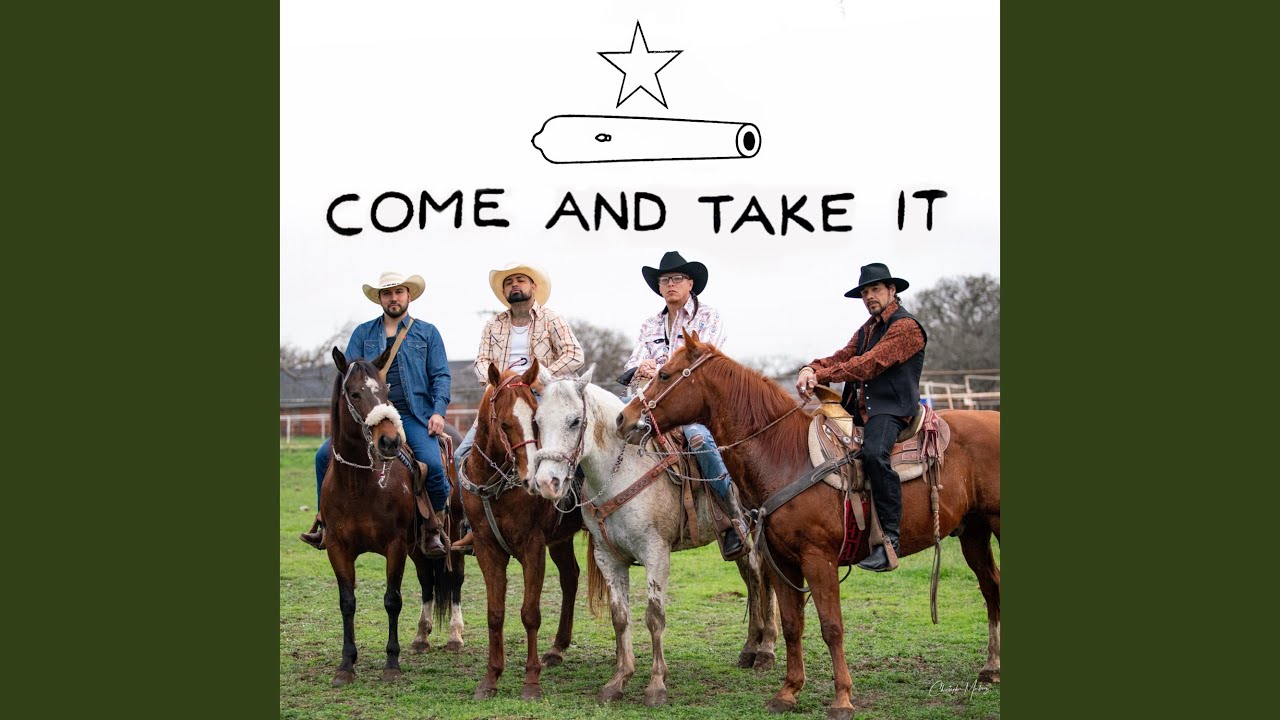Exploring the Legacy of “Come and Take It”
The phrase “Come and Take It” packs a punch and holds deep roots in Texan history. Initially waved as a flag of defiance in the Texas Revolution, this powerful mantra has morphed into a potent cultural symbol across various contexts, from political debates to pop culture references. It’s fascinating to see how this simple phrase transforms into a rallying cry in contemporary discourse, inspiring everything from songs to protests. So, let’s dive into the fierce legend behind “Come and Take It” and explore its ongoing resonance in today’s society.
The phrase first came into prominence in 1835, representing the struggle against tyranny when Texan colonists faced Mexican forces. Rather than just a method of resistance, it has become synonymous with a rugged Texan identity—one forged in grit and determination. This legacy continues to thrive today, as Texans proudly fly this banner, reminding everyone of their commitment to individual freedom and independence. This initial meaning has certainly morphed into numerous modern interpretations that make it an essential part of the American lexicon.
Furthermore, “Come and Take It” is a call to arms in the gun rights movement. Advocacy groups like the NRA utilize the phrase during rallies, channeling a deep-seated sentiment of resistance against governmental overreach. Each iteration of the phrase invigorates debates around the Second Amendment, drawing in crowds that echo sentiments of defiance and personal liberty. This evolution showcases how a historical phrase can become a beacon of contemporary cultural discourse, illuminating our ongoing tensions around power and control.

Top 5 Cultural References of “Come and Take It”
1. Texas Revolution Symbolism
Hands down, the most striking use of “Come and Take It” stems from the Texas Revolution. The effigy of the cannon signifies a bold stand against oppression, marking a transformative moment in Texas’ history. Texans keep this spirit alive through festivals and parades, celebrating their storied past while nurturing their cultural identity. This pride in heritage resonates deeply as the phrase reinforces the idea of standing firm, come what may.
2. Gun Rights Movement
Fast forward to the modern age, and “Come and Take It” re-emerges as a staple of the gun rights movement. Score stickers and flags emblazoned with the phrase appear at protests nationwide, igniting spirited debates about Second Amendment rights. The phrase’s newfound relevance highlights a community’s fierce dedication to individual liberties. It’s become a bold signal that evokes a sense of civic responsibility, reaffirming their position on this contentious landscape.
3. Pop Culture References in Film and Music
The phrase’s cultural footprint stretches far and wide in pop culture. In 2020, the film Horizon Line encapsulated a moment charged with the “Come and Take It” spirit amid life-threatening stakes. Likewise, country music star Morgan Wallen weaves themes of defiance and resilience into his songs. The phrase serves to evoke a fiery sense of rebellion, resonating with audiences who champion the fight against adversity and life’s challenges.
4. Literary Interpretations in “Tell Me Lies” Book
On the literary front, Carola Lovering’s “Tell Me Lies” captures a defiant spirit through its characters battling societal norms. While the title doesn’t directly cite the phrase “Come and Take It,” the book encapsulates themes of resilience in the face of life’s expectations. The struggle to maintain one’s truth provides a rich narrative that echoes back to the boldness of standing one’s ground, barely wavering.
5. A Mematic Phenomenon
Social media platforms have turned “Come and Take It” into a linguistic playground. Memes capitalizing on the phrase reflect a blend of humor and defiance, often taking on unexpected meanings, like “Bear With Me” during tough times or using comedic formats such as “Tell Me a Joke.” These reinterpretations ensure the spirit of defiance stays relevant, infusing light-heartedness into an often heavy discourse over cultural identity and authority.
The Fierce Community Responses to ‘Come and Take It’
The themes of defiance resonate through music, literature, and film, echoing across generations. Take the band The 1975 and their song “Tell Me Why” as a case study; the lyrics stir feelings of rebellion and critique societal authority. The raw emotions articulated capture a spirit closely aligned with the phrase “Come and Take It.” Each stanza becomes a rallying call against conformity and a demand for authenticity—echoing the legacies of those before them who stood unwavering against oppression.
Throwback to the hilarious film “Don’t Be a Menace”, where the cast parodied expectations shaped by violence and defiance, we see characters presenting their diverse challenges. The characters’ journeys reflect the blend of humor and rebellion, inviting viewers to rethink what it means to resist. Even this light-hearted portrayal dovetails with the broader implications of “Come and Take It,” showcasing diverse interpretations across media.
By dissecting these cultural markers, we see how artistic expressions encourage individuals to examine personal relationships with defiance, survival, and identity. The multilayered manifestations of “Come and Take It” invite us to introspect and firm up our stances on pivotal issues, contributing to an ever-evolving narrative of cultural identity steeped in history.

The Lasting Impact of “Come and Take It”
The journey of “Come and Take It” unveils the dynamic nature of symbolism in cultural contexts. As our society alters, this underlying tone of defiance—manifesting through art, literature, and activism—continues to flourish. It’s intriguing to think about how the phrase can evoke feelings of rebellion, solidarity, and individualism all at once.
In conclusion, the essence of “Come and Take It” far transcends its historical roots. It has adapted and redefined itself into a versatile symbol representing struggles and victories, both big and small. As pop culture intertwines with personal narratives, we witness the vivacity of the human spirit expressed through numerous forms of media. Each invocation of “Come and Take It,” whether rooted in fierce proclamation or playful meme, encapsulates a spirit of resistance, encouraging us to explore our truths and embrace the tenacity to stand firm for what we believe in.
Come and Take It: Fun Trivia and Interesting Facts
The Origins of a Rallying Cry
The phrase “come and take it” has a storied past, rooted in defiance and resistance. Originally a battle cry from the Texas Revolution, it stems from an incident involving a cannon that was demanded back by Mexican authorities. This moment ignited a passion for independence that resonates in modern culture. Did you know that the iconic flag featuring the phrase includes an image of a cannon, symbolizing the stubborn spirit of Texan pioneers? Similarly, the phrase has been adopted in various contexts, from protests to even film references—like the rousing energy of Train To Busan 2 where characters embody fierce resistance, much like those original Texans.
Modern Pop Culture Connections
Fast forward to today, “come and take it” has inspired various cultural references, from music to cinema. For instance, the phrase might pop up in conversations over a delectable Neil patrick harris cake, drawing parallels between determination and creativity. On the flip side, the rebellious attitude behind “come and take it” can also be likened to on-screen duos like will smith Margot Robbie, who often portray characters that refuse to back down against overwhelming odds, embodying that same fierce defiance.
A Legacy of Defiance
Interestingly, beyond its historical roots, “come and take it” continues to thrive in modern dialogues around rights and freedoms. The phrase has been adopted by groups advocating everything from gun ownership to art appreciation. In a lighter twist, you can even find the phrase on quirky merchandise, appealing to those who proudly display their Texan pride—like the popular Gasolinera motifs that have popped up in quirky shops across the nation. Moreover, it hints at the creative spirit seen in new generations, akin to phenomenons like Coco Vandi, where expressions of individuality are celebrated. Moreover, as families like naomi Christina Biden navigate the seas of tradition and innovation, we see that the spirit of “come and take it” is very much alive, driven by a push for self-definition and resistance against conformity.
In sum, “come and take it” isn’t just a phrase; it stands as a symbol of camaraderie, liberty, and the relentless pursuit of one’s aspirations. So next time you hear it, take a moment to reflect on its rich tapestry of meaning throughout history—after all, whether entering politics or simply grabbing a slice of pie while discussing purchasing rental property tips, there’s a bit of that rebellious spirit everywhere!

What is the meaning of Come and Take It?
“Come and Take It” expresses a challenge against authority or oppression, urging others to try to take something that one possesses, symbolizing defiance and strength.
What was the slogan of the Texas Revolution?
The slogan of the Texas Revolution was “Remember the Alamo,” which served to inspire Texans to fight for their independence from Mexico after the fall of the Alamo mission.
What is the story of the cannon Come and Take It?
The story behind “Come and Take It” revolves around a conflict in Gonzales, Texas, where Mexican troops tried to reclaim a cannon that had been given to the Texian settlers for defense. The settlers hung a flag with the phrase to signify their refusal to hand it over.
What is the slogan of Gonzales Texas?
In Gonzales, Texas, the local slogan is “Come and Take It,” which highlights the town’s role in the Texas Revolution and its stance for independence.
Who says Come and Take It?
“Come and Take It” is often associated with Texian revolutionaries, particularly during the Battle of Gonzales, signifying their determination to resist Mexican authority.
What happened in Gonzales, Texas?
In Gonzales, Texas, a significant event occurred in 1831 when tensions rose over a cannon, leading to the first battle of the Texas Revolution, marking the start of Texan resistance against Mexican rule.
Why do so many Mexicans live in Texas?
Many Mexicans live in Texas due to historical ties, a shared border, economic opportunities, and the longstanding cultural connections between Texas and Mexico.
Did Mexico try to take Texas back?
Yes, Mexico attempted to reassert control over Texas after it declared independence in 1836, leading to ongoing tensions and conflicts in the region.
Why do Texans say to Remember the Alamo?
Texans say “Remember the Alamo” to honor those who fought and died at the Alamo, symbolizing bravery and the struggle for Texas independence.
What was the battle cry for Texas?
The battle cry for Texas was “Remember the Alamo,” rallying forces during the uprising against Mexican rule and invoking a sense of sacrifice and heroism.
Who won the Alamo?
The Alamo was ultimately won by Mexican forces under General Santa Anna, who captured the mission where a small group of Texan defenders held out for 13 days.
What does “come and take it with a gun” mean?
“Come and take it with a gun” conveys the idea of armed resistance against oppression, implying that if someone wants to take away a person’s rights or property, they’ll have to do it through force.
What is the famous Texas motto?
The famous Texas motto is “Friendship,” reflecting the state’s spirit of hospitality and camaraderie.
Which slogan became the war cry for Texas?
The slogan that became the war cry for Texas during the revolution was “Remember the Alamo,” a rallying call that united the fighters in their struggle for independence.
What is the Houston Texans slogan?
The Houston Texans’ slogan is “We are Texans,” emphasizing the team’s pride in its roots and connection to the state.
What is the meaning behind “come and take it”?
“Come and take it” conveys a sense of defiance and ownership, telling others that one is ready to defend what they have against any challenges.
What is the meaning of come and get it?
“Come and get it” is an invitation, often used to encourage someone to take advantage of an opportunity, usually implying eagerness or excitement about what’s being offered.
What does the Come and Take It tattoo mean?
A “Come and Take It” tattoo symbolizes a commitment to personal freedom and defiance, often reflecting pride in Texas heritage or a stance against perceived oppression.
What is the Greek origin of Come and Take It?
The phrase “Come and Take It” has its roots in ancient Greece, notably at the Battle of Thermopylae, where it was used to convey a message of resistance against enemies.
What is the official slogan of Texas?
The official slogan of Texas is “The Lone Star State,” which represents its history and identity as an independent republic before becoming part of the United States.
What is the slogan of the American Revolution?
The slogan of the American Revolution was “No taxation without representation,” rallying colonists against British rule and calling for fair treatment.
Which slogan became the war cry for Texas?
The war cry for Texas during the revolution was “Remember the Alamo,” which galvanized the Texians during their fight for independence.
What was the main goal of the Texas Revolution?
The main goal of the Texas Revolution was to gain independence from Mexican rule, allowing Texians to establish their own government and way of life.







